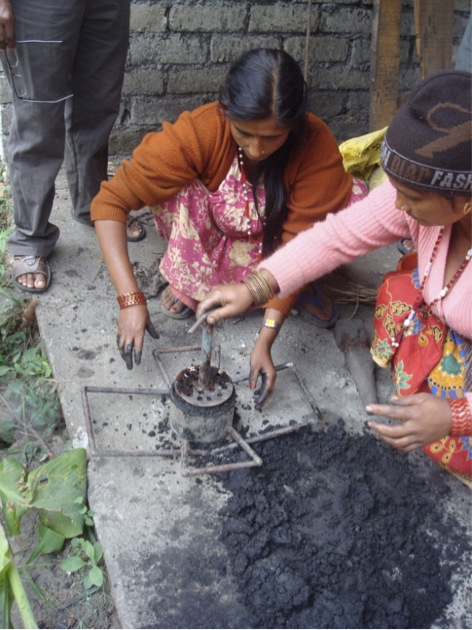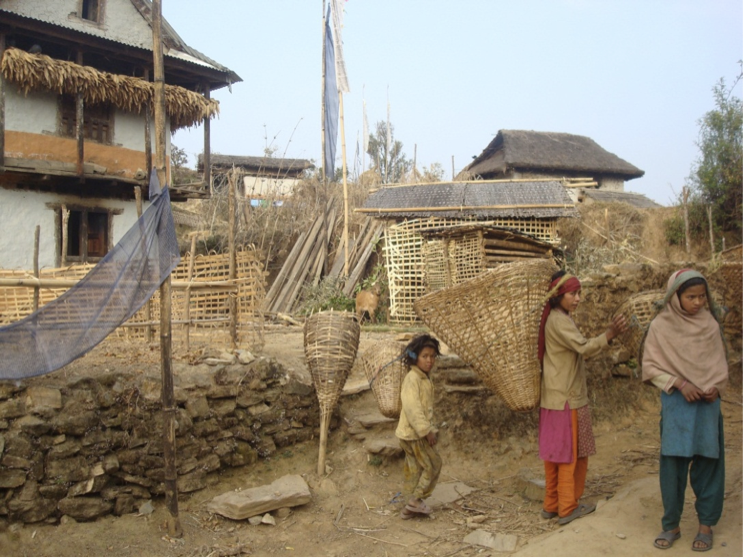by Stuty Maskey, 25/04/2012
As rural economies, especially in the developing parts of the world, are getting haphazardly exposed to the latest market calls for organic products, natural fibers, exotic herbs etc., several such resource rich areas are undergoing changes in their social/cultural values with deep and long term ramifications.  On the one hand, in theory (and can’t be denied in practice) the political process will likely privilege the interests of those who are economically empowered. On the other hand, increasingly individual decision-making is guided by monetary valuation that is gradually altering the intangible dimensions of social structure, values, trade, and relationship.
On the one hand, in theory (and can’t be denied in practice) the political process will likely privilege the interests of those who are economically empowered. On the other hand, increasingly individual decision-making is guided by monetary valuation that is gradually altering the intangible dimensions of social structure, values, trade, and relationship.
PICTURE: Women making bio-briquettes from forest weed –banmara. These can be used as an alternate to fuel for cooking and heating purposes. This also has market demand.
For instance, Nepal’s forests are mostly located in rural areas. With increasing road access and mobility, rural communities are now getting opportunities to stimulate and diversify their economic opportunities. However, a critical look at it explains how women folks are increasingly being viewed as labor inputs for production of handicrafts, fiber, bio-briquettes and other products. Notably, such activity creates their share in the household income, and presumably increases their voice in household matters. In practice, brides are chosen (arranged marriages) after careful analysis of how quickly she can produce products besides managing the traditional, often strenuous household chores. The burden of transition for this generation of women is more than what just meets the eye.
Another case is that of Nepal’s indigenous honey bees that represent some of the earth’s last remaining honey bee populations that have not been spoiled by exotic diseases and predators (Joshi, 2008). The honey hunters are typically poor, remote and disconnected from the market. Their beekeeping and collection activities are traditional, extensive, and even sustainable but were dismissed as ‘backward’ and ‘inefficient’ by their following generation of foreign trained beekeepers. Over a period of time, this traditional honey hunting activities faded/ or almost died due to lack of support services and introduction of more ‘sophisticated’ and ‘efficient’ bee-hive entrepreneurial trainings. However, the recent demand for organic and natural honey in the world market is now turning tables. The flip side is that because the wild honey hunting this time around is demand driven, the chances of harvesting unsustainably by a generation that does not fully understand the extensive preparation of this age-old tradition is high.
 PICTURE: Bamboo rich places have many handicraft skills that can fetch them good income if they have access to markets.
PICTURE: Bamboo rich places have many handicraft skills that can fetch them good income if they have access to markets.
A more recent case is that of the burgeoning trade of high-value Himalayan herb called Yarsagumba. Only a decade ago, these herbs were collected for medicinal purposes or were mostly consumed by the yaks. The sudden demand in the international market as ‘Himalayan Viagra’ has transformed the rural Himalayan economy. The economic gains have come with a deep cost to the natural Himalayan ecology. The past couple of years has seen throngs of visitors from all over the country and the region, in positions of harvesters, traders, middlemen, researchers, documentarians etc. camping for months during harvest season to make the most from these herbs. Rival communities have fought wars, killed each other (James, 2012) and left behind a disturbing amount of human footprint which will have longer term implications on the Himalayan environment as well as the availability of these herbs. Yet, one can’t simply blame these people that are languished to one of the most extreme environments on earth with extremely hard lifestyles to step back when an opportunity unravels that can significantly impact their livelihood. More so, in a country that is still recovering from a violent insurgency of over a decade and still mires in political instability. If anything, the state’s priority towards sustainability for herbs or honey is of minimal priority.
The responsibility then to some extent falls back on individual consumers and the global markets at large, to help these communities develop structures in order to transform in a socially, ethically and ecologically smooth manner. This is not an easy task. The markets have been long driven with profit. But helping remote rural communities may just be in their favor too, as in the long run; human, natural and social capital are all crucial for the existence of businesses dependent on them.
Photos: Stuty Maskey
See more pictures of the Yarsagumba harvest in photographer Thomas L. Kelly´s slideshow Yarsagumba harvesters face harsh conditions
Reference:
James, J. 2012. ‘Himalayan Viagra’ stirs danger, violence in Nepal. Center for investigative reporting. Retrieved on April 25, 2012 from: http://cironline.org/reports/%E2%80%98himalayan-viagra%E2%80%99-stirs-danger-violence-nepal
Joshi, S.R. 2008. Honey in Nepal. Approach, strategy, and intervention for subsector promotion. Retrieved on April 26, 2012 from: http://www.bee-hexagon.net/files/file/fileE/Honey/HoneyinNepal.pdf
STUTY MASKEY earned an MA in Public Policy from Oregon State University as a USAID scholar from Nepal and is an ICRPS alumna. She is currently working for a forestry programme jointly managed by the Government of Nepal and the Swiss Agency for development and cooperation. She is interested to understand and establish mechanisms to harness the economic potential of forest resources to address poverty and to ensure equitable benefits (environmental and economic) for the forest dependent communities.
